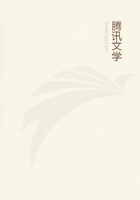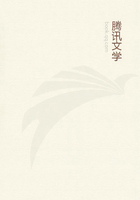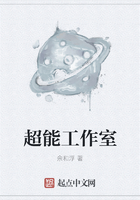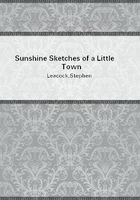Mild, Moil, Myle, Miles; (3) make her a daughter of the Duke of York, or of the Duke of Argyll, or of lords and of knights from all quarters of the compass, and sister-in-law to an English barber, also one of the Queen's 'serving-maids.' We at least cannot accept those numerous and glittering contradictions as corruptions which could be made soon after the Russian events, when the true old ballad style was dead.
We now produce more startling variations. The lover is not only 'the King,' 'the Prince,' Darnley, 'the highest Stuart o' a',' but he is also that old offender, 'Sweet Willie,' or he is Warrenston (Warriston?). Mary is certainly not hanged (the Russian woman was beheaded) away from her home; she dies in Edinburgh, near the Tolbooth, the Netherbow, the Canongate, and--
O what will my three brothers say When they COME HAME frae sea, When they see three locks o' my yellow hair Hinging under a gallows tree?
It is impossible here to give all the variations. Mary pulls, or does not pull, or her lover pulls, the leaf of the Abbey, or 'savin,' or other tree; the Queen is 'auld,' or not 'auld;' she kicks in Mary's door and bursts the bolts, or does nothing so athletic and inconsistent with her advanced age. The heroine does, or does not, appeal vainly to her father. Her dress is of all varieties. She does, or does not, go to the Tolbooth and other places. She is, or is not, allured to Edinburgh, 'a wedding for to see.' Her infanticide is variously described, or its details are omitted, and the dead body of the child is found in various places, or not found at all. Though drowned in the sea, it is between the bolster and the wall, or under the blankets! She expects, or does not expect, to be avenged by her kin. The king is now angry, now clement--inviting Mary to dinner! Mary is hanged, or (Buchan's MS.) is not hanged, but is ransomed by Warrenston, probably Johnston of Warriston! These are a few specimens of variations in point of fact: in language the variations are practically countless. How could they arise, if the ballad is later than 1719?
We now condescend to appeal to statistics. We have examined the number of variants published by Mr. Child in his first six volumes, on ballads which have, or may have, an historical basis. Of course, the older and more popular the ballads, the more variants do we expect to discover--time and taste producing frequent changes.
Well, of 'Otterburn' Mr. Child has five versions; of the 'Hunting of the Cheviot' he has two, with minor modifications indicated by letters from the 'lower case.' Of 'Gude Wallace' he has eight. Of 'Johnnie Armstrong' he has three. Of 'Kinmont Willie' he has one.
Of 'The Bonnie Earl o' Moray' he has two. Of 'Johnnie Cock' he has thirteen. Of 'Sir Patrick Spens' he has eighteen. And of 'The Queen's Marie' (counting Burns's solitary verse and other brief fragments) Mr. Child has eighteen versions or variants Thus a ballad made, ex hypothesi Sharpiana, in or after 1719, has been as much altered in oral tradition as the most popular and perhaps the oldest historical ballad of all, 'Sir Patrick Spens,' and much more than any other of the confessedly ancient semi- historical popular poems. The historical event which may have suggested 'Sir Patrick Spens' is 'plausibly,' says Mr. Child, fixed in 1281: it is the marriage of Margaret of Scotland to Eric, King of Norway. Others suggest so late a date as the wooing of Anne of Denmark by James VI. Nothing is known. No wonder, then, that in time an orally preserved ballad grows rich in variants. But that a ballad of 1719 should, in eighty modern non-balladising years, become as rich in extant variants, and far more discrepant in their details, as 'Sir Patrick Spens' is a circumstance for which we invite explanation.
Will men say, 'The later the ballad, the more it is altered in oral tradition'? If so, let them, by all means, produce examples! We should, on this theory, have about a dozen 'Battles of Philiphaugh,' and at least fifteen 'Bothwell Brigs,' a poem, by the way, much in the old manner, prosaically applied, and so recent that, in art at least, it was produced after the death of the Duke of Monmouth, slain, it avers, by the machinations of Claverhouse! Of course we are not asking for exact proportions, since many variants of ballads may be lost, but merely for proof that, the later a ballad is, the more variants of it occur. But this contention is probably impossible, and the numerous variations in 'The Queen's Marie' are really a proof of long existence in oral tradition, and contradict the theory espoused by Mr. Child, who later saw the difficulty involved in his hypothesis.
This argument, though statistical, is, we think, conclusive, and the other considerations which we have produced in favour of the antiquity of 'The Queen's Marie' add their cumulative weight.
We have been, in brief, invited to suppose that, about 1719, a Scot wrote a ballad on an event in contemporary Russian Court life; that (contrary to use and wont) he threw the story back a century and a half; that he was a master of an old style, in the practice of his age utterly obsolete and not successfully imitated; that his poem became universally popular, and underwent, in eighty years, even more vicissitudes than most other ballads encounter in three or five centuries. Meanwhile it is certain that there had been real ancient ballads, contemporary with the Marian events--ballads on the very Maries two or three of whom appear in the so-called poem of 1719; while exactly the same sort of scandal as the ballad records had actually occurred at Queen Mary's Court in a lower social rank. The theory of Mr. Child is opposed to our whole knowledge of ballad literature, of its age, decadence (about 1620-1700), and decease (in the old kind) as a popular art.

